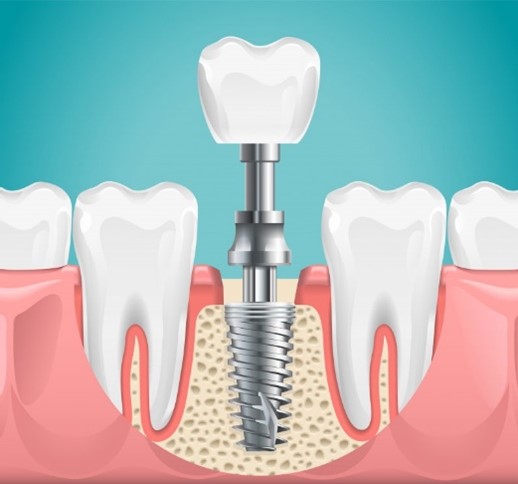
If you’ve recently undergone tooth extraction, then having that missing pearly white replaced as soon as possible should be towards the top of your to-do list. That said, you might be curious about receiving a dental implant to replace your extracted tooth; after all, dental implants are the premier option for replacing missing teeth. Keep reading to learn more about dental implants and how they’re a viable option for replacing pulled teeth, along with when you’re able to receive them following a tooth extraction.
Why Replacing Missing Teeth Is Important
One of the biggest problems with missing teeth, regardless of how they’re lost, is the increased likelihood of losing additional teeth! If there’s a gap in your smile, the surrounding teeth will gradually begin to lean towards the open space, weakening and eventually falling out. Replacing missing teeth allows those empty sockets to be filled once more, ensuring that the neighboring teeth stay in their proper positions. Missing teeth can also lead to other oral health concerns including bite problems that can directly affect your overall nutrition, in addition to negatively impacting your speech and dampening your self-confidence.
How Soon Can I Get a Dental Implant After Having a Tooth Extracted?
There are several important factors that determine how soon you can get a dental implant following a tooth extraction. Consider the three main categories of implant placement:
- Immediate placement – If you have sufficient bone structure and good oral health following your tooth extraction, then your dentist can immediately place your implant after pulling your tooth. From there, the titanium post of the implant will begin fusing with your jawbone over the next few months. Once the union of bone and implant is complete, the crown is attached, and your dental implant is ready to go!
- Early placement – Also known as immediate-delayed implant placement, this usually takes place two or three months after your tooth extraction. This is necessary when the gums and supporting tissue around your socket need time to heal up before you can receive your implant. Once it’s healed, the titanium post is surgically inserted and osseointegration can begin.
- Delayed placement – If your oral health is compromised in any way, your implant placement will need to be put on hold. For instance, if you don’t have adequate bone density to support implants, you might need a dental bone graft which can add 3 to 6 months to your timeline. You might also have a gum infection that requires treatment. In any case, once your oral health is satisfactory (which might take some time), your dentist will place your implants.
If you’ve recently had a tooth extracted, you might feel a little impatient with the replacement process. But replacing the tooth in the correct manner and at an appropriate time will ensure that your dental implant is a lasting and effective solution.
About the Author
Dr. Jeremy Jorgenson completed his dental doctorate at the University of Southern California and has practiced in the Costa Mesa area for several years. His practice is pleased to offer a wide range of available services, including dental implants. If you have any questions about dental implants or would like to schedule a visit, you can contact Dr. Jorgenson’s practice online or over the phone: (714) 424-9099.

